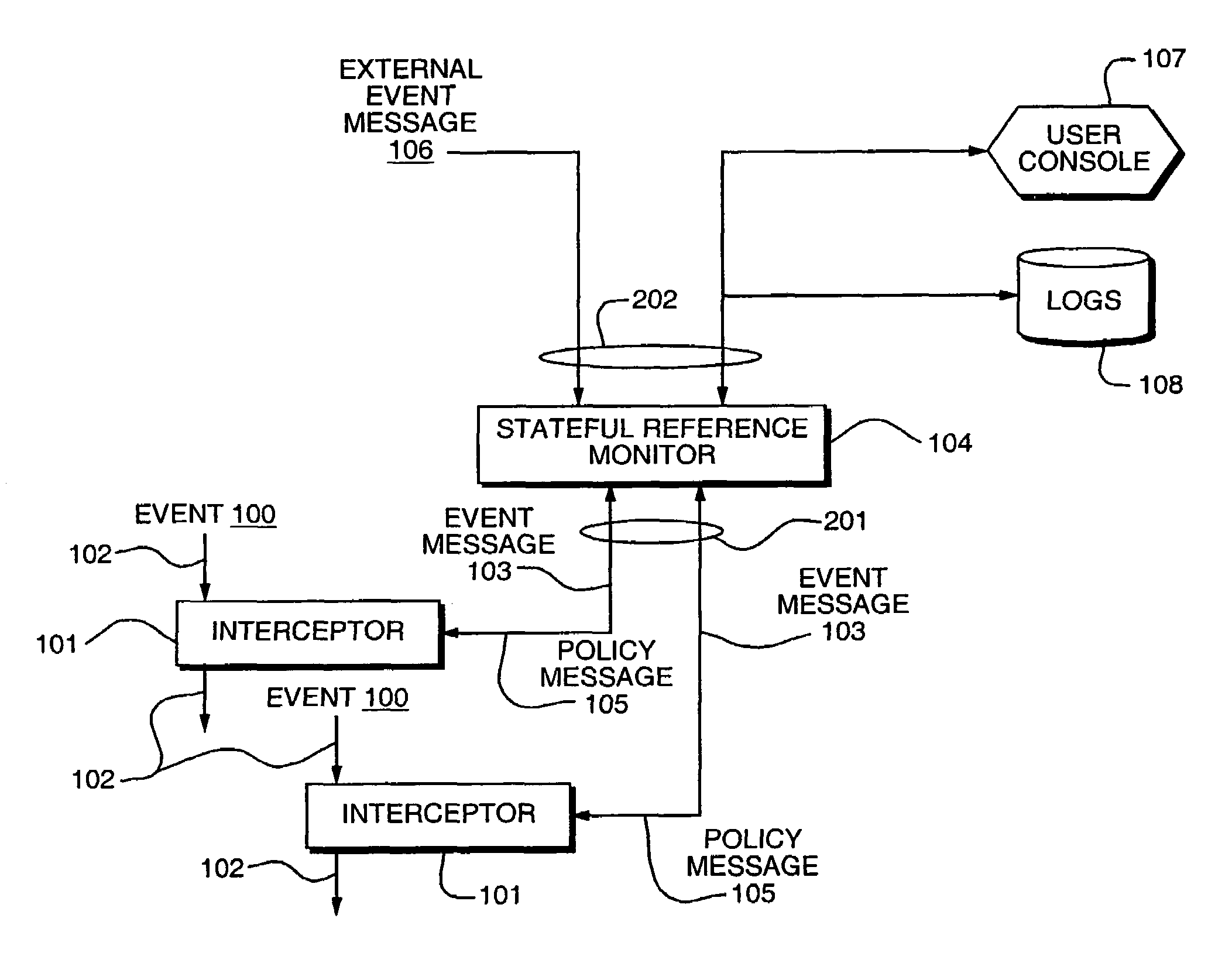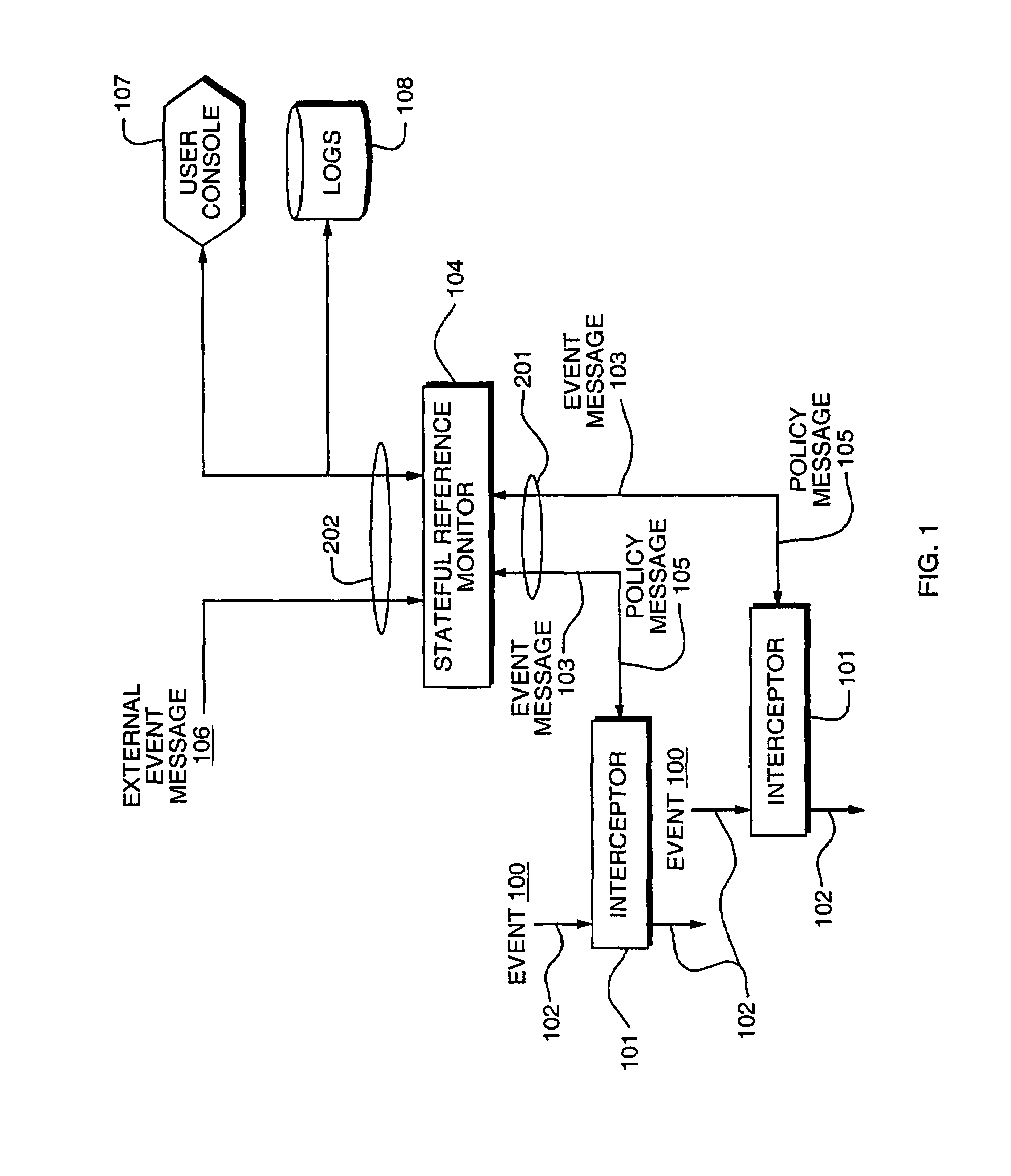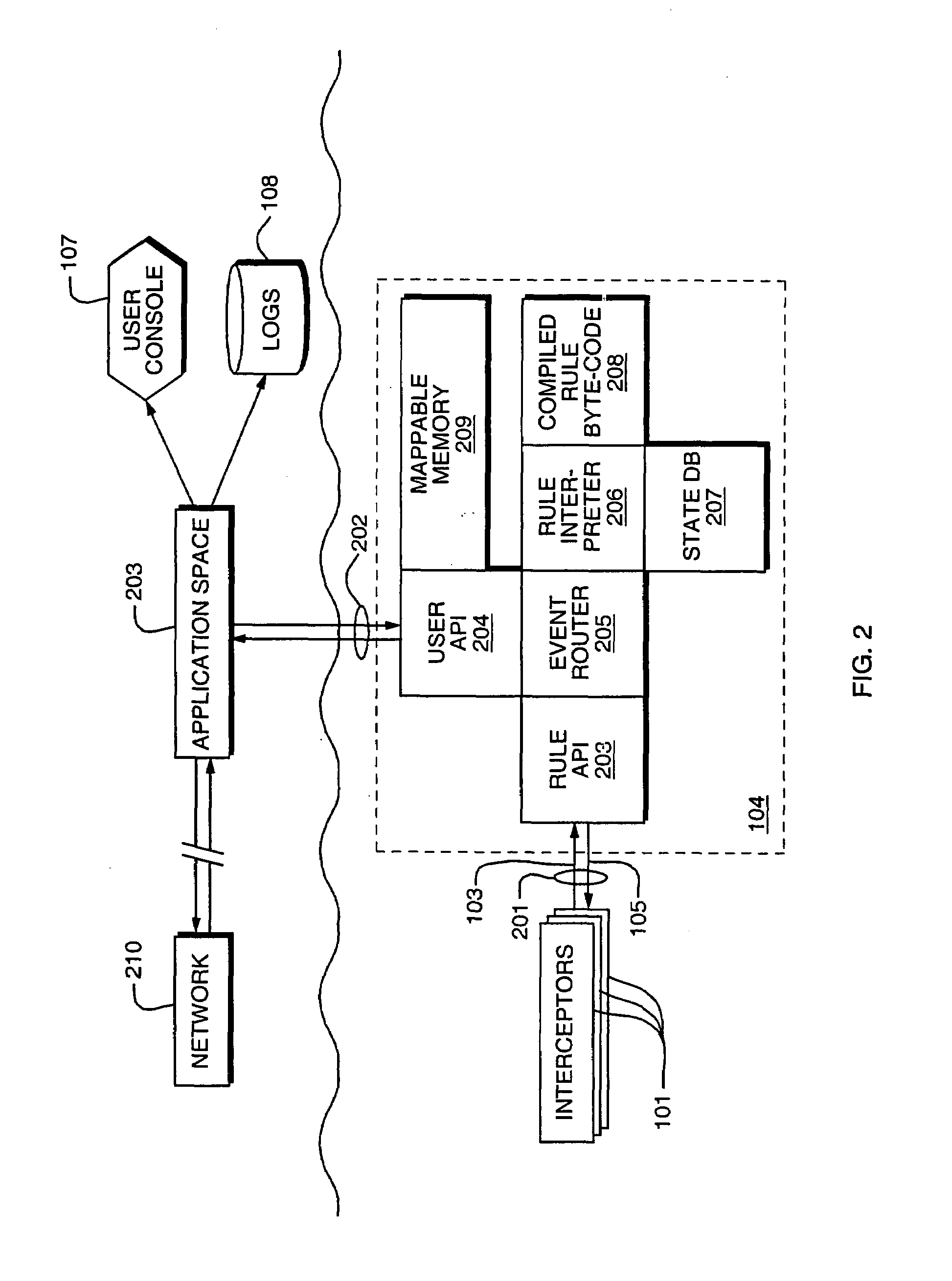Access control by a real-time stateful reference monitor with a state collection training mode and a lockdown mode for detecting predetermined patterns of events indicative of requests for operating system resources resulting in a decision to allow or block activity identified in a sequence of events based on a rule set defining a processing policy
a state collection training and reference monitor technology, applied in the field of software, can solve the problems of only detecting intrusions, damage done, and long-lost intruders, and achieve the effect of making access control decisions more difficul
- Summary
- Abstract
- Description
- Claims
- Application Information
AI Technical Summary
Benefits of technology
Problems solved by technology
Method used
Image
Examples
Embodiment Construction
[0032]The invention will be better understood upon reading the following detailed description of various aspects of embodiments thereof.
[0033]Aspects of an embodiment of the invention are now illustrated in connection with FIG. 1. The exemplary embodiment is in the computer system security field, but the invention can readily be embodied in systems in other fields of endeavor, as will be evident to the skilled artisan.
[0034]In computers, one important aspect of system security is monitoring system events 100, e.g. access requests to a resource, and controlling the effect of those events, e.g. blocking or allowing the requested access to a resource. In order to monitor events, interceptors 101 are inserted in the control or communication paths 102 traversed by those events. For example, if an event monitored is a network access request, the interceptor 101 is inserted in the operating system at a point where the network access request is communicated from one portion of the operating...
PUM
 Login to View More
Login to View More Abstract
Description
Claims
Application Information
 Login to View More
Login to View More - R&D
- Intellectual Property
- Life Sciences
- Materials
- Tech Scout
- Unparalleled Data Quality
- Higher Quality Content
- 60% Fewer Hallucinations
Browse by: Latest US Patents, China's latest patents, Technical Efficacy Thesaurus, Application Domain, Technology Topic, Popular Technical Reports.
© 2025 PatSnap. All rights reserved.Legal|Privacy policy|Modern Slavery Act Transparency Statement|Sitemap|About US| Contact US: help@patsnap.com



